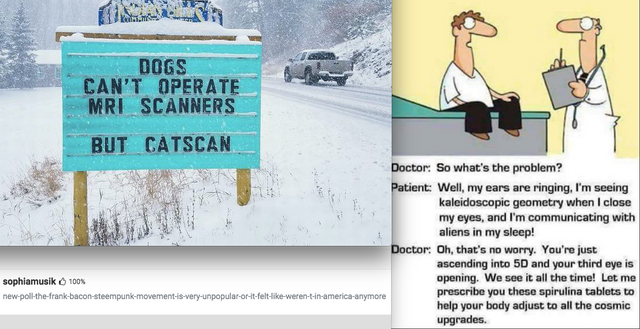@logic - @frankbacon doesn't PLAY by your rules... YOU PLAY by HIS | Progressive supranuclear palsy (PSyP)
Progressive supranuclear palsy (PSP) is a degenerative DIS EASE involving the gradual deterioration and [BLOCK] of specific volumes of the brain. Males and females are affected approximately equally and there is no racial, geographical or occupational predilection. Approximately six people per 100,000 population have PSP. It has been described as a tauopathy.

Contents
1 Symptoms and signs
2 Cause
3 Pathophysiology
4 Diagnosis
4.1 Differential diagnosis
5 Treatment
5.1 Rehabilitation
6 Prognosis
7 Societies
8 References
9 External links
Symptoms and signs[edit]

This patient presented with progressive dementia, ataxia and incontinence. A clinical diagnosis of normal pressure hydrocephalus was entertained. Imaging did not support this, however, and on formal testing abnormal nystagmus and eye movements were detected. A sagittal view of the CT/MRI scan shows atrophy of the midbrain, with preservation of the volume of the pons. This appearance has been called the "Hummingbird sign" or "Penguin sign". There is also atrophy of the tectum, particularly the superior colliculi.

These findings suggest the diagnosis of progressive supranuclear palsy.
The initial symptoms in two-thirds of cases are loss of balance, lunging forward when mobilizing, fast walking, bumping into objects or people, and falls.[citation needed] Other common early symptoms are changes in personality, general slowing of movement, and visual symptoms.

Later symptoms and signs are dementia (typically including loss of inhibition and ability to organize information), slurring of speech, difficulty swallowing, and difficulty moving the eyes, particularly in the vertical direction. The latter accounts for some of the falls experienced by these patients as they are unable to look up or down. Some of the other signs are poor eyelid function, contracture of the facial muscles, a backward tilt of the head with stiffening of the neck muscles, sleep disruption, urinary incontinence and constipation.
The visual symptoms are of particular importance in the diagnosis of this disorder.
Patients typically complain of difficulty reading due to the inability to look down well. Notably, the ophthalmoparesis experienced by these patients mainly concerns voluntary eye movement and the inability to make vertical saccades, which is often worse with downward saccades. Patients tend to have difficulty looking down (a downgaze palsy) followed by the addition of an upgaze palsy. This vertical gaze paresis will correct when the examiner passively rolls the patient's head up and down as part of a test for the oculocephalic reflex. Involuntary eye movement, as elicited by Bell's phenomenon, for instance, may be closer to normal. On close inspection, eye movements called "square-wave jerks" may be visible when the patient fixes at distance. These are fine movements, that can be mistaken for nystagmus, except that they are saccadic in nature, with no smooth phase.

Although healthy individuals also make square-wave jerk movements,
PSP patients make slower square-wave jerk movements, with smaller vertical components. Assessment of these square-wave jerks and diminished vertical saccades is especially useful for diagnosing progressive supranuclear palsy, because these movements set PSP patients apart from other parkinsonian patients. Difficulties with convergence (convergence insufficiency), where the eyes come closer together while focusing on something near, like the pages of a book, is typical. Because the eyes have trouble coming together to focus at short distances, the patient may complain of diplopia (double vision) when reading.

Cardinal manifestations:
Supranuclear ophthalmoplegia
Neck dystonia
Parkinsonism
Pseudobulbar palsy
Behavioral and cognitive impairment
Imbalance and walking difficulty
Frequent falls
Cause[edit]
The cause of PSP is unknown.
The lord Bacon